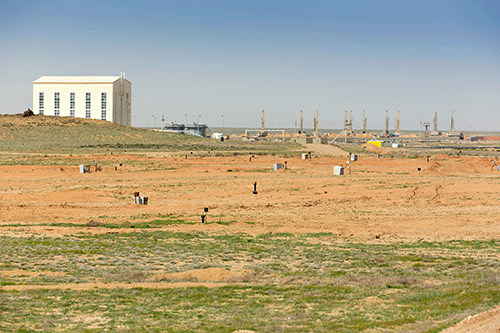The Stampriet Aquifer Uranium Mining Association (SAUMA) remains adamant that a proposed uranium extraction method in the Omaheke region by a Russian mining company poses a genuine threat to underground water supplies. In a statement released last week, SAUMA stated that in situ leaching poses a real threat to the Stampriet Aquifer, which they emphasised is the only year-round supply of drinking water in the south-east of the country.
SAUMA describes itself as uniting a community of Namibians that are each deeply aware of the crucial role water plays within the stunning yet dry environment of the area where Uranium One, through its local subsidiary, Headspring Investments, intends to pursue the in situ leaching (ISL) extraction method. Uranium One is in turn part of the Russian state-owned nuclear energy company, Rosatom.
“The towns and farming area of the Stampriet Artesian Basin (SAB) will potentially be impacted by contaminated water should the exploration and mining within this water-control area be given the green light. SAUMA is still opposed to any in situ leach mining in the vicinity of our fresh drinking water,” reads the statement.
Meanwhile, Headspring’s exploration has now been halted for almost a year after it proposed ISL, also called in-situ recovery (ISR) or solution mining. ISR is an extraction process used to recover minerals such as copper and uranium through boreholes drilled into the underground ore deposit.
In efforts to allay fears from the local community, Uranium One recently took a Namibian delegation on a familiarisation visit to the Dalur Mine in Russia where the contentious extraction method is used. The Namibian delegation consisted of journalists, Leonardville Town Council CEO, the Omaheke Regional councillors, Omaheke farmers and Leonardville residents.
However, SAUMA maintains that when visiting the Dalur Mine, they did not have a chance to see what actually happens underground.
“The majority of questions asked by the representatives during the visit were answered evasively, superficially or not at all, with no indication of a guarantee that groundwater is not impacted negatively. The mining solution can escape and cause contamination of other aquifers. With ISL mining, there can be no guarantee that mining solutions will not escape,” SAUMA stated.
Responding to questions from this paper, Uranium One spokesperson Riaan van Rooyen said the company was surprised by the negative tone of the SAUMA statement, as it, according to them, does not accurately reflect the sentiments expressed by the other members of the trip, including representatives from SAUMA, who accompanied the group on an educational trip to Dalur mine in Russia.
“Throughout the visit, our team made every effort to ensure that the delegates were provided with a comprehensive and informative experience to the mining method. We were pleased to witness the enthusiasm and satisfaction expressed by the majority of participants, including SAUMA representatives. Their positive feedback during and after the trip reaffirmed our commitment to maintaining high standards of transparency, safety, and environmental responsibility in our operations,” he added.
Van Rooyen noted the mining company remains committed to fostering open dialogue and transparency in interactions with all stakeholders.
In efforts to quell the ongoing uranium squable, parliamentary standing committees on both economics and natural resources are expected to undertake a site tour at the mine’s Namibian operations before meeting with the community in Leonardville today.
Caption: Contentious method… The in situ leaching extraction method being utilised at the Dalur mine in Russia. Photo: Contributed


